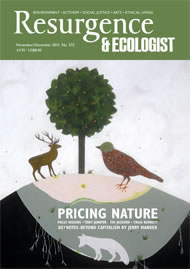“We will not fight to save what we do not love.”
Finding this quote from Stephen Jay Gould was like a flash of light. I had spent much of the last chapter of my first book, A Prickly Affair, describing that thought – along the way arguing that hedgehogs were the most important creatures on the planet, holding the key to the survival of humanity between their muddy paws. Yes, you are supposed to smile at that – but the argument does hold. And that sentiment is central to my latest book, The Beauty in the Beast.
We are exhorted to fight to save the natural world. But as Gould rightly points out, we are not going to engage in this fight without first falling in love. So wildlife and conservation groups attempt to lure us, to seduce us, with images of amazing animals. They rely upon the charismatic megafauna. Lions and tigers, whales and dolphins.
But relying on images of these remote, endangered and unobtainable species is like gazing at Heat or Hello magazine and hoping it will solve your relationship problems. You are going to fall in love with the girl or boy next door, not some doomed A-lister. And the hedgehog is the animal equivalent of the girl or boy next door.
Of course, it does not stop there. The hedgehog acts as a gatekeeper species; in fact it becomes a lens through which you can more clearly see the beauty and complexity of the wild.
Perhaps surprisingly people took issue with my position, claiming that I had ignored their own particular species – and so this became the narrative engine of The Beauty in the Beast. I went to meet 15 people who had a similar relationship to me with Nature. All had at some point in their lives crossed over an invisible line into what some were comfortable as describing as love.
My wonderful water-vole woman, Kate Long, remembers clearly her Damascene moment when, at the age of eight, she refused to leave a small bridge over a river from where she had seen her first-ever vole, feeding. Her mother decided not to fight it and left her while she went to do the shopping with the appeal that the child should not fall into the river. Kate realised, later in life, that something far deeper had happened: she had fallen in love.
Many scientists I speak to find it hard to utter the word ‘love’ in the context of their work. My fox man talked a lot about his ‘appreciation’ of the beautiful animal. And robin-advocate Andrew Lack skirted neatly around the issue with “Scientists do themselves a disservice if they deny the importance of the unquantifiable.”
Throughout The Beauty in the Beast I was looking for evidence that there really were other gatekeeper species out there. And in the end I found what I guess I already knew – that there are as many species as there are people dedicating time to them. Of course I still claim the hedgehog is superior, but I was introduced to dragonflies, sparrows, adders and badgers through the eyes of passionate advocates and learned to see them very differently.
The way of viewing the animals was brought home to me by Ivan Wright, the solitary-bee man. We spent time out in the woods as traditional entomologists, with sun hats and butterfly nets, and he taught me to do more than just look: he encouraged me to really see. It was a lesson that came, in some form, from all the people I met. Truly engaging with wildlife requires more than just looking: it insists you commit all your senses to the experience. William Blake’s inspirational exhortation to see a heaven in a wild flower and a world in a grain of sand is the inevitable consequence of this commitment.
I hope that The Beauty in the Beast will encourage you to go out and get nose-to-nose with wildlife. Risk falling in love and do not be afraid of seeing more deeply.
As I learned from my fox man, it is a mistake to think that things retain their magic better if they aren’t understood.







